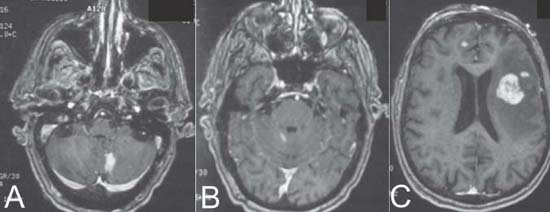Case 20 Primary Central Nervous System Lymphoma Fig. 20.1 (A–C) Enhanced T1-weighted magnetic resonance images showing multiple lesions, (C) the largest one being in the left frontal lobe.

 Clinical Presentation
Clinical Presentation
 Questions
Questions
 Answers
Answers
< div class='tao-gold-member'>
Only gold members can continue reading. Log In or Register to continue



